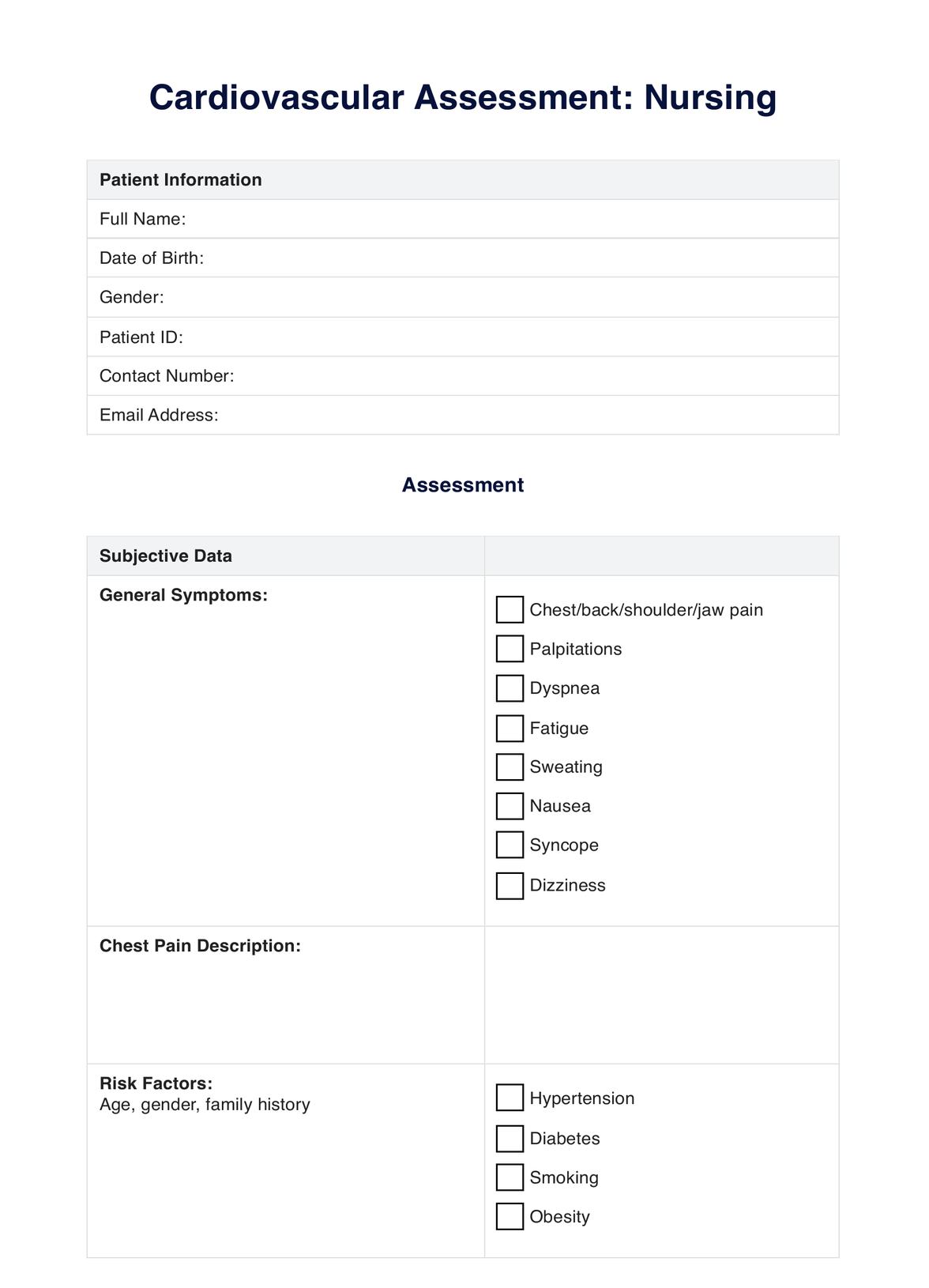Monitoring blood pressure is crucial as it helps assess the force exerted by blood against arterial walls. Abnormalities in blood pressure, like hypertension or hypotension, can indicate cardiovascular issues such as heart disease, stroke risk, or vascular complications. Regular monitoring of blood flow aids in early detection and intervention to manage these conditions effectively.

Cardiovascular Assessment
Explore comprehensive cardiovascular nursing assessments vital for monitoring heart health with this curated guide and free template!
Cardiovascular Assessment Template
Commonly asked questions
Nurses listen for heart murmurs, abnormal rhythms, or additional sounds like gallops or clicks during auscultation. These can indicate valve problems, arrhythmias, or structural issues within the heart. Detecting these abnormalities early guides further investigations or treatment, preventing potential complications and promoting cardiac health.
Lifestyle changes, including a healthy diet, regular exercise, smoking cessation, and stress management, significantly impact cardiovascular health. Nurses play a pivotal role in educating patients about these modifications. Supporting and guiding patients in adopting healthier habits reduces risk factors, improves heart health, and contributes to preventing cardiovascular diseases.
EHR and practice management software
Get started for free
*No credit card required
Free
$0/usd
Unlimited clients
Telehealth
1GB of storage
Client portal text
Automated billing and online payments











